The Tree Doctor Is In
On campus, we have forests filled with trees, as well as gardens and other landscapes where our trees live. As the largest and oldest plants on our grounds, we have a team of specialists to make sure our trees stay healthy and safe. Tree Check is a diagnostic tool used by our arborists to evaluate trees of concern as part of a more detailed tree risk assessment process. The nondestructive evaluation tool is a stress wave timer that helps us detect the presence of decay in the trunk of a tree.
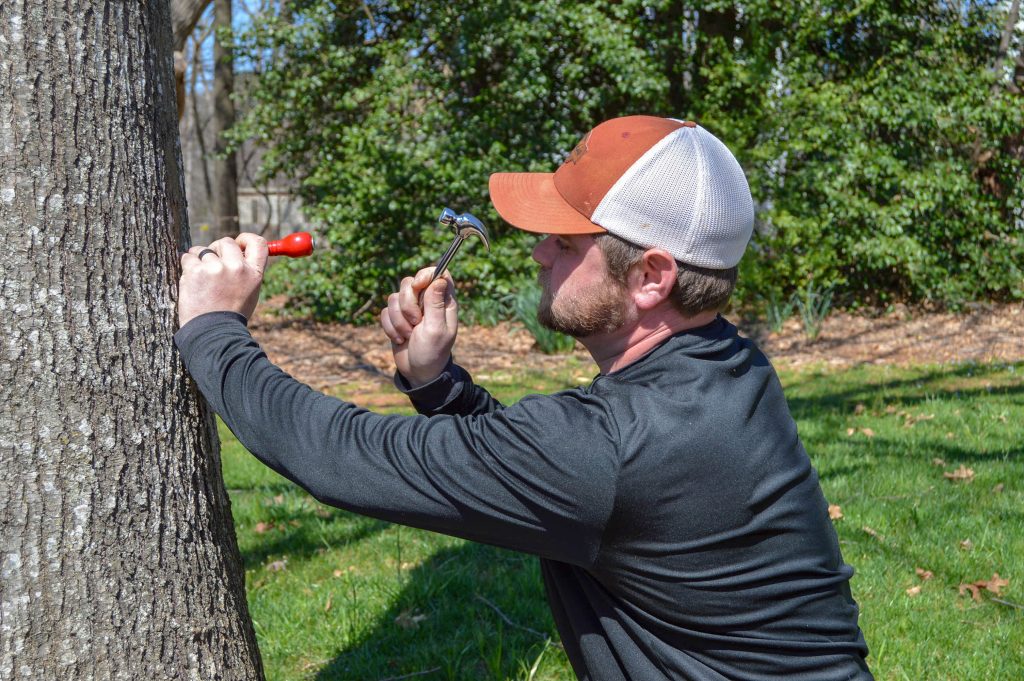
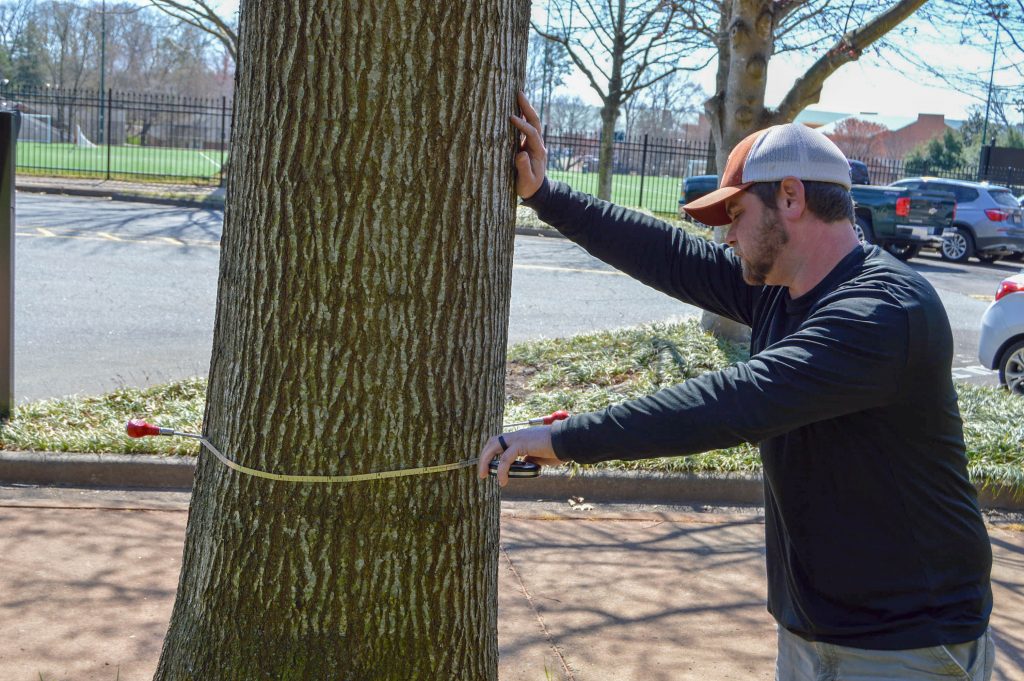
On campus, we assess the health of trees regularly, whether the tree has been noted as a concern or just as a routine checkup on our trees. Part of this process is noting the decay in the trunk of a tree. Since trees are so different in size, shape, and species, there is a series of guidelines to use when determining if a tree has an unsafe amount of deterioration. One of the first steps when using the Tree Check diagnostic tool is to measure the trunk where the tool will be used. This measurement is important to note so that the wave transit time has a calibration based on the diameter of the trunk.
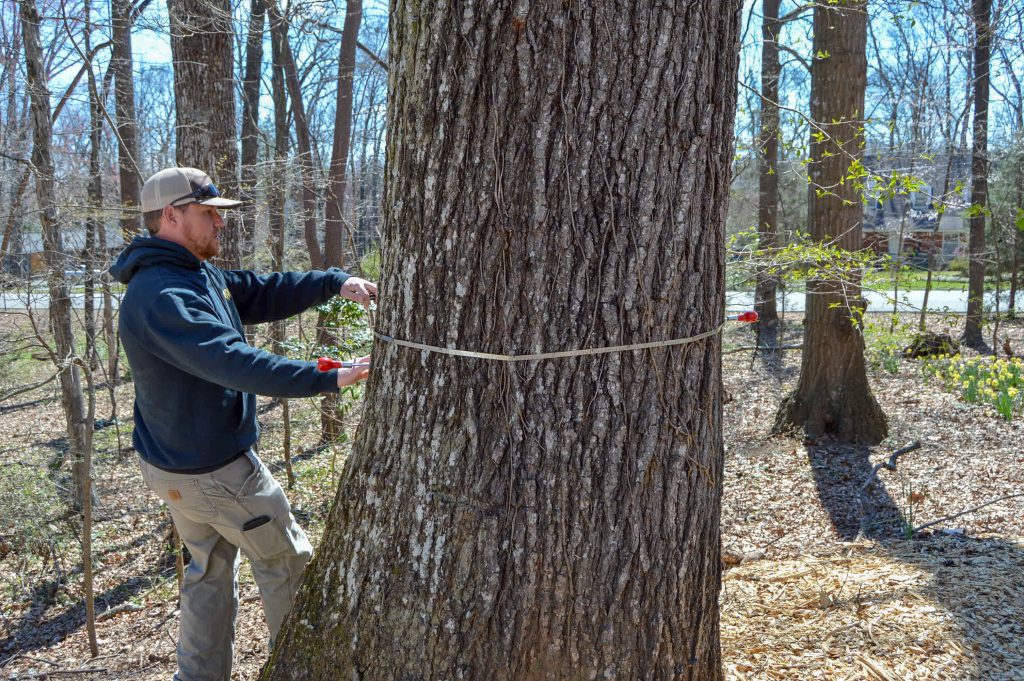
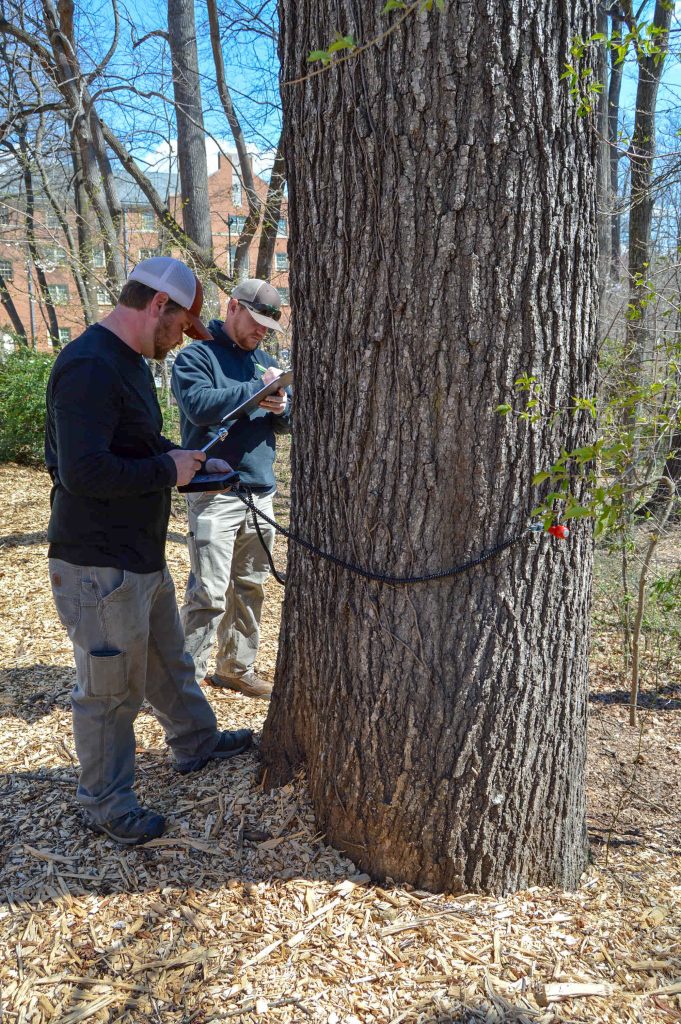
The tool consists of two scratch awls that are connected by sensor cables to a control box with a display screen and wave reading. The awls are placed on the sides of the tree trunk, as level as possible with each other on opposite sides. When using the tool, a member of the team takes a small hammer and taps the “start” awl sending a sonic wave to the “finish” awl that is timed by the circuit board in the control box. The time it takes for the wave to go from start to finish tells us the amount of matter the wave travels through to get there.
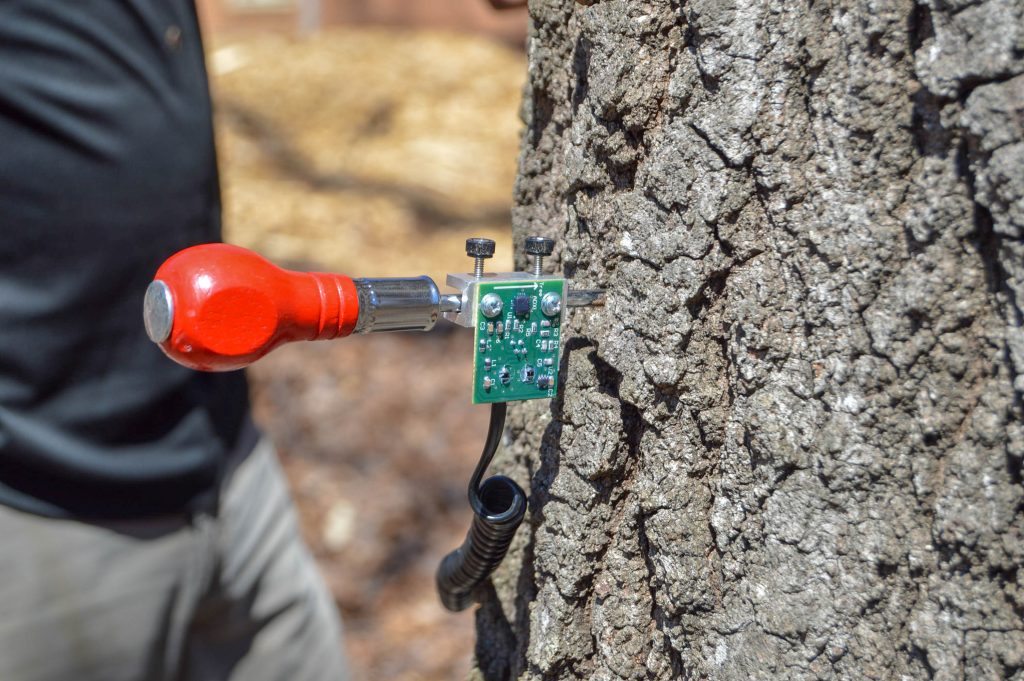
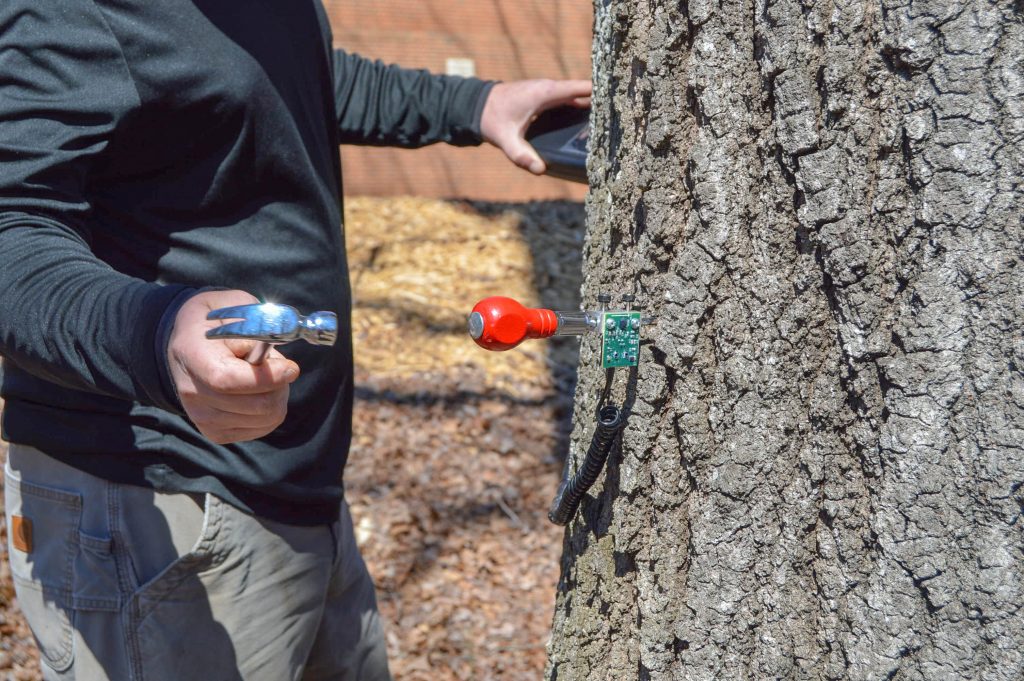
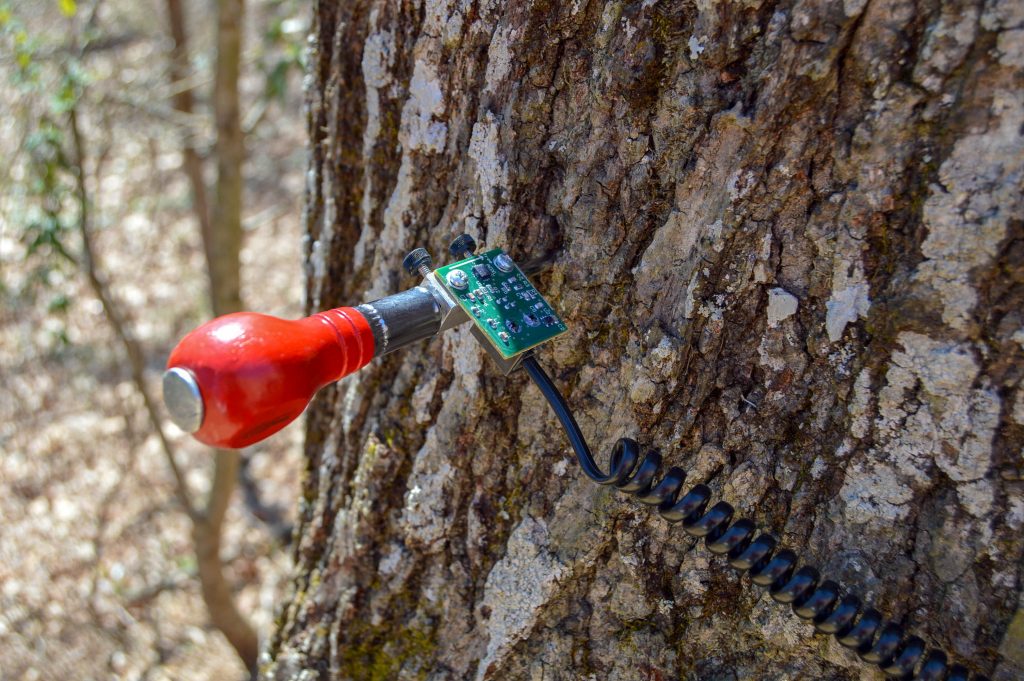
When calculating the exact amount of matter between the two awls, we note the type of tree, so that the tool is correctly calibrated. Our arborists are experts at tree classification and identifying individual tree properties, so we identify the specific tree as one of the three tree species types to follow the Tree Check guidelines. Hardwood trees include our oak and beech trees, while softwoods include pines, fir, and spruce. There is also a very soft wood classification that includes the willow and cottonwood poplar tree. Each of these categories has a certain range of transit times that the tool will measure, showing us if the tree is dangerously decaying or not.
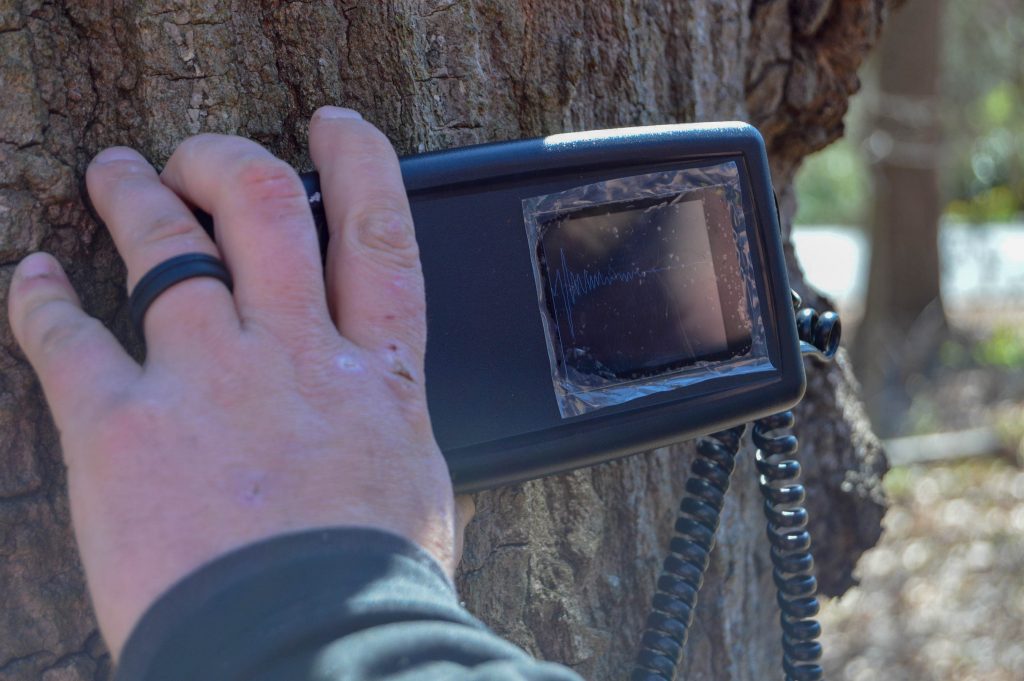
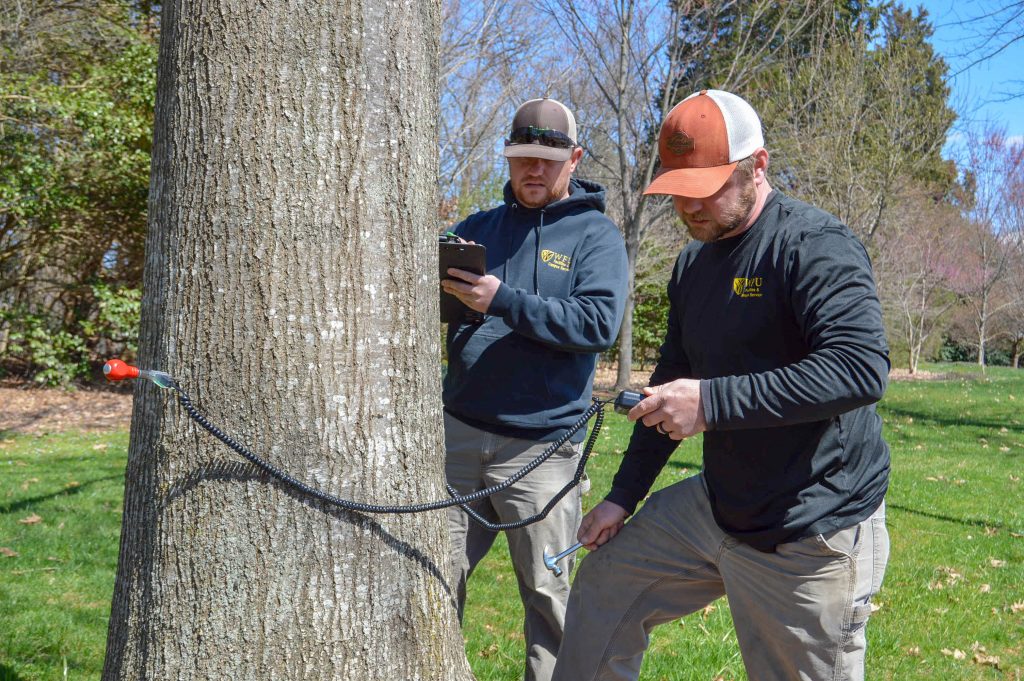
After determining the existence of decay and that the tree is a risk to people, property, or activities, we refer to the Tree Advisory Committee about options for removals, replacements, and reclaiming the harvested wood. For more information on the Tree Advisory Committee, contact the Office of Sustainability.
